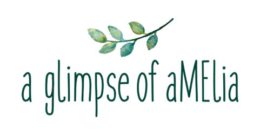1,4-Dioxane
1,4-Dioxane
Why don’t I like it??
Because you won’t find it on ingredient labels.
1,4-dioxane is a contaminant created when common ingredients react to form the compound when mixed together.
It’s a solvent that strips away the skin’s natural acid layer which protects us from bacteria, mould and viruses. It is made from propylene, a petroleum bi-product and is thought to promote brown spots and premature aging of skin.
Other common ingredients that may be contaminated by 1,4-dioxane include PEG compounds and chemicals that include the clauses “xynol,” “ceteareth” and “oleth”.
Independent lab tests co released by the Campaign for Safe Cosmetics in 2007 showed that popular brands of children’s bubble bath and body wash contained 1,4-Dioxane.
Exposure to the general public may occur from the use of consumer products containing ethoxylated chemicals (e.g., detergents, cosmetics/toiletries, pharmaceuticals and food products) containing 1,4-dioxane as an impurity, in addition to its reported natural occurrence in certain foods.
Vacuum-stripping can remove 1,4-dioxane from an ethoxylated product, or manufacturers can skip ethoxylation entirely by using less harsh ingredients to begin with. Companies often cost cut in this area and choose not to proceed with this option.
Organic standards do not allow ethoxylation at all.
Nearly half of cosmetics containing ethoxylated surfactants have been shown to contain 1,4-dioxane. For the protection of public health, it is recommended that levels of 1,4-dioxane in consumer products be limited to 100 ppm.
1,4-dioxane may exert its effects through inhalation, skin absorption, and ingestion. 1,4-dioxane is listed as a carcinogen, which causes cancer.
1,4-Dioxane is an eye and mucous membrane irritant, primary skin irritant, central nervous system depressant, nephrotoxin and hepatotoxin. Not something I would like to have in cosmetics I’m using on my or my children’s skin.

